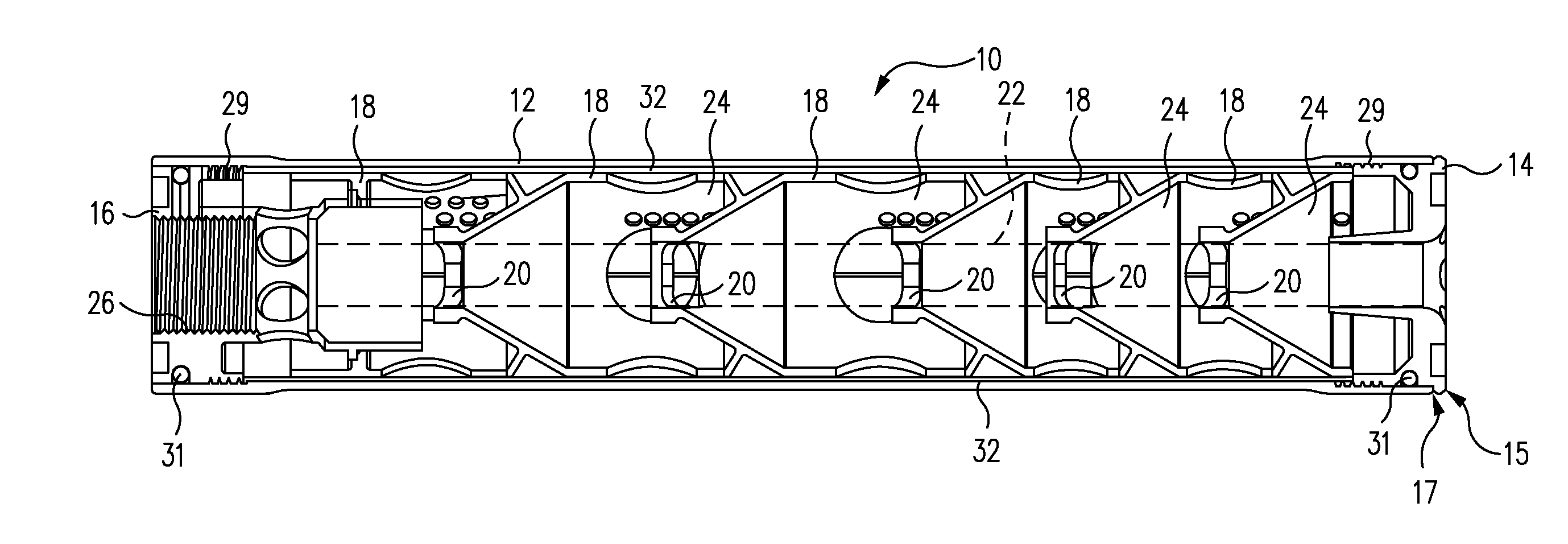Firearm sound suppressor
a sound suppressor and firearm technology, applied in the field of firearms, can solve the problems of affecting the two-stage sound suppression technique is relatively more complex to implement, and the overall sound level of the muzzle blast is not high enough
- Summary
- Abstract
- Description
- Claims
- Application Information
AI Technical Summary
Benefits of technology
Problems solved by technology
Method used
Image
Examples
Embodiment Construction
[0078]A firearm sound suppressor 10 is illustrated in the perspective, top plan, and cross-sectional views of FIGS. 1-3, respectively. As shown, the suppressor 10 includes an elongated substantially tubular housing 12, front and rear end plates 14 and 16, respectively, disposed at corresponding ends of the housing 12, and baffles 18 disposed concentrically within the housing 12 and between the two end plates 14 and 16. Although housing 12 and various other housings referred to herein are illustrated as having generally cylindrical shapes, such housings may be implemented using any shape (e.g., square, rectangular, triangular, polygonal, or others) in other embodiments as may be desired for particular applications.
[0079]In the particular embodiments illustrated in FIGS. 1-3, baffles 18 each contain a central aperture 20 and are disposed coaxially within the housing 12 such that they are distributed along the long axis thereof, with their central apertures 20 collectively defining an ...
PUM
 Login to View More
Login to View More Abstract
Description
Claims
Application Information
 Login to View More
Login to View More - R&D
- Intellectual Property
- Life Sciences
- Materials
- Tech Scout
- Unparalleled Data Quality
- Higher Quality Content
- 60% Fewer Hallucinations
Browse by: Latest US Patents, China's latest patents, Technical Efficacy Thesaurus, Application Domain, Technology Topic, Popular Technical Reports.
© 2025 PatSnap. All rights reserved.Legal|Privacy policy|Modern Slavery Act Transparency Statement|Sitemap|About US| Contact US: help@patsnap.com



